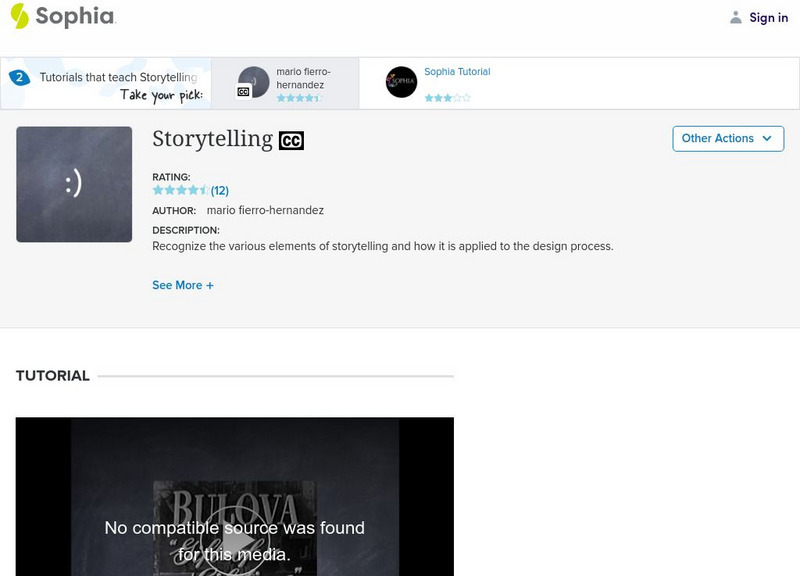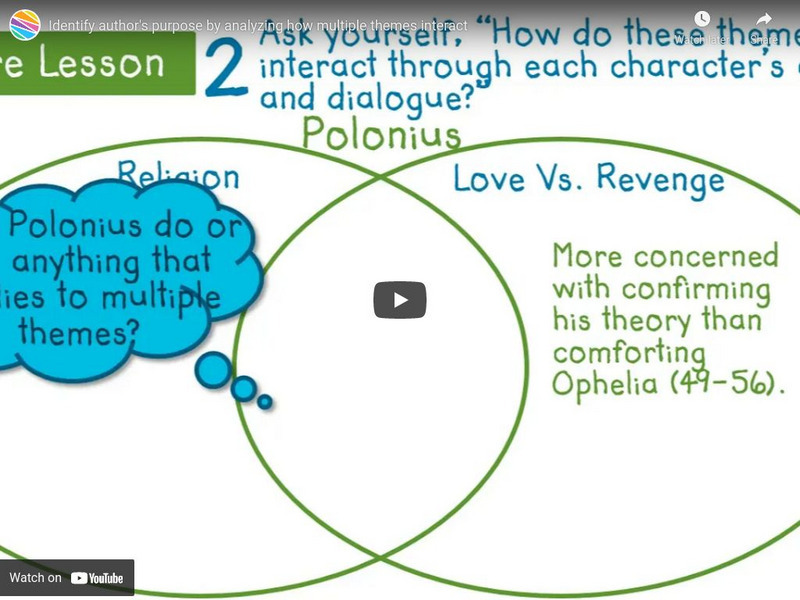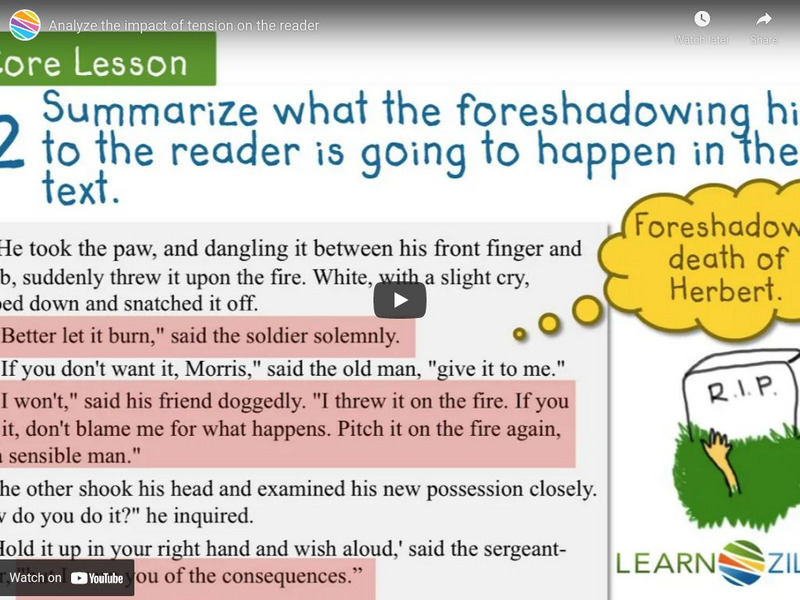Hi, what do you want to do?
TED-Ed
Why Shakespeare Loved Iambic Pentameter
Spice up your traditional approach to teaching poetic structure with a wonderful animated video, which not only covers such terms as foot, meter, verse, but also stresses Shakespeare's unique use of iambic pentameter to convey...
PBS
Comparing Hemingway to Young Adult Literature
Challenge groups to create a recommended reading list of contemporary young adult fiction that explores the same themes found in Ernest Hemingway's short stories and novels. After examining a list Hemingway created and a list put...
PBS
Exploring Hemingway’s Style
The man, the myth, and the reality. Three clips from the documentary Hemingway by Ken Burns and Lynn Novick introduce viewers to the unique features of Ernest Hemingway's writing style and the events in Hemingway's life that...
PBS
Why Pride and Prejudice Is Relevant Today
Believe it or not, there is a group of Jane Austen fans who call themselves Janeites and gather each year to celebrate all things Austen, dancing, and dressing in period-authentic clothing. In this video, one devoted fan shares...
PBS
One Hundred Years of Solitude | The Great American Read
One Hundred Years of Solitude introduces readers to magic realism. Told in a series of flashbacks and flash-forwards, Gabriel Garcia Marquez's Nobel Prize-winning novel is a candidate for The Great American Read program and aficionados...
PBS
Allison Williams Explains Her Love for Frankenstein's Monster
Ah, but who is the real monster in Frankenstein? Actress Allison Williams shares her reasoning for why Mary Shelly's horror story should be included in The Great American Read series.
PBS
Margaret Atwood Explains the Dystopia of The Handmaid's Tale
Talk about a teaser! A short video from the PBS series, The Great American Read, offers just enough information about Margaret Atwood's The Handmaid's Tale to fascinate viewers and have them reaching for the book. The author asserts she...
PBS
The Color Purple
A clip from the documentary Alice Walker: Beauty in Truth features Walker discussing her writing process and why she chose to write The Color Purple as an epistolary novel. The resource is part of PBS' American Masters...
PBS
Gabrielle Union Discusses The Color Purple
Gabrielle Union discusses the role Alice Walker's Pulitzer Prize-winning novel, The Color Purple, plays in her life. She stresses the importance of readers being able to find reflections of themselves in literature.
PBS
Resurrecting Zora Neale Hurston | American Masters: Alice Walker
Zora Neale Hurston, her life, her work as an anthropologist recording the customs and speech of southern Black people, and her novels would have remained largely ignored if not for the efforts of Alice Walker. An American Masters video...
PBS
The Pain of History and Beloved
Readers of Toni Morrison's Beloved share their reasons for why the painful and powerful narrative should be on the list of books for the Great American Read program.
PBS
And Then There Were None
Justice and murder are the heart of the best mysteries. The writers interviewed for this episode of the Great American Read try to convince viewers that the best of this genre is Agatha Christie's And Then There Were None.
PBS
1984 by George Orwell
Reverend Katrina Foster offers her rationale for why Winston Smith, the tragic hero of George Orwell's dystopian novel 1984, is her favorite literary character.
Crash Course
Comedies, Romances, and Shakespeare's Heroines: Crash Course Theater #16
As a writer, Shakespeare took the genre of comedy to a new level. An informational video outlines the characteristics of Shakespeare's comedies and romances and explains how the plays differed from others during the period. Additionally,...
TED-Ed
Why Should You Read James Joyce's "Ulysses"?
What is Bloomsday? Why would thousands travel to Dublin on this day to visit sites depicted in a novel that is ridiculously hard to read? Why even bother with reading such a book? Find out by viewing a short video that suggests the...
Curated OER
In on a Secret? That's Dramatic Irony
Struggling to get your learners to understand irony? Try out this video, which clarifies each type of irony before going into more depth on dramatic irony. The narrator relates this type of irony to both horror and comedy films and...
Sophia Learning
Sophia: Storytelling: Lesson 1
In this lesson, you will learn about storytelling and how it is applied to the design process. It is 1 of 3 in the series titled "Storytelling."
Crash Course
Crash Course Literature #1: How and Why We Read
This seven minute video series of Crash Course Literature uses lively verbal explanations accompanied by entertaining visuals with a host who provides compelling examples of how and why people read.
Sophia Learning
Sophia: Analyze the Impact of the Point of View
Notes describing a three-step process to analyze the impact of the point of view on a literary text. Notes can be both read and listened to.
Imagine Learning Classroom
Learn Zillion: Determine an Author's Message by Analyzing Character Development
In this video, you will learn how to determine an author's message by analyzing character development. [5:56]
Imagine Learning Classroom
Learn Zillion: Identify Author's Purpose: Analyze How Multiple Themes Interact
In this lesson, you will learn how to identify an author's purpose by analyzing how multiple themes interact throughout a text. [7:01]
Imagine Learning Classroom
Learn Zillion: Video: Determine How Two Themes Interact and Build on One Another
In this video, you will learn how two themes interact and build on one another by analyzing an author's word choices. [8:28]
Imagine Learning Classroom
Learn Zillion: Analyze How a Poet's Word Choices Contribute to the Poem's Meaning
In this video, you will learn how to determine the difference between what is directly stated and what is meant by considering the effect of word choice on tone. [7:47]
Imagine Learning Classroom
Learn Zillion: Lesson Video for 'Analyze the Impact of Tension on the Reader'
In this lesson, you will learn how tension impacts the reader by analyzing the author's use of foreshadowing. [5:54]




























